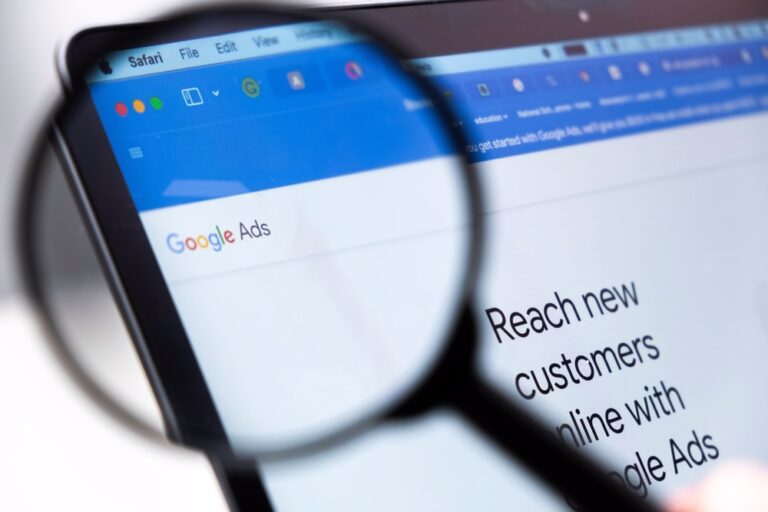Many businesses are reaping the benefits of content marketing and an effective content marketing strategy. And if you aren’t then it’s not too late to develop a content marketing strategy to help your business grow online.
But what exactly is needed in order to develop a content marketing strategy? How does your business get started in developing a content marketing strategy that helps deliver on your business goals?
We will highlight the most important aspects of the development of a content marketing strategy that delivers the results for your business that you are looking for.

What is a content marketing strategy?
A content marketing strategy outlines exactly what you are trying to achieve, and how you are going to go about achieving your targets.
Whether you are looking to boost revenue, attract more customers, increase traffic, get more downloads or otherwise – your strategy outlines how you will achieve this.
Creating a strategy can often be the most difficult part of digital marketing – and we offer outsourced digital marketing services and packages that covers strategy creation.
What does a content marketing strategy cover?
When coming up with your content marketing strategy, below are a few things you will need to ask yourself:
- What is the reason behind you creating content?
- What are you trying to achieve with your content?
- What does success look like for your content?
- What business goals will your content help you achieve?
- What obstacles will you come across?
- What is your target audience?
- What is your content roadmap?
- Which channels will you use?
- What content formats will you use?
Mission and business goals in mind
It’s essential that you focus on what is important for your business.
What is your mission, and what are your content marketing goals? Think about who you are trying to reach, with what content, and to achieve what. There’s always new content marketing trends for businesses, so you need to stay ahead of the game.
Goals usually cover one or several of the following:
- Increase revenue
- Increase sales
- Generate more leads
- Improve quality of leads
- Increase site traffic
- Improve branding
- Improve online perception
- Gain influence and authority
- Become a thought leader within your industry
- Reduce marketing costs
- Improve ROI
- Increase online engagement
- Grow social media presence
- Improve SEO
When developing both your content marketing strategy and the content itself, always keep your business goals and your mission in mind.
What is it you’re trying to achieve? If your strategy isn’t striving to achieve this, or your content won’t help you achieve it, then it’s time to rethink.
Let’s say you want to attract new customers. If your content is written with traffic in mind, and is unlikely to help you attain new customers, then you haven’t thought it out.
Focus on a strategy that will help you achieve your mission and goals, and ensure your content follows through on this.
Key performance indicators
Your key performance indicators, or KPIs as they are more commonly referred to, will play a pivotal role in determining how successful your content marketing and content marketing strategy actually is going forwards.
By setting your KPIs, it helps you know when you have achieved goals, and helps you to plan ahead.
Your KPIs can include:
- Number of downloads
- Number of sign ups
- Number of email subscribers
- Increase in site traffic
- Increase in engagement
- Increase in likes or shares
- Revenue targets
- Leads attributed to content marketing
Audience
You may know the target audience of your business, but what would the audience be for your content?
It may be the same audience, but perhaps you have 2 or 3 distinctive and different audiences for your business.
You need to consider who your audience is so you can create the right kind of content in order to ensure it is as effective as possible.
Think about your typical audience demographics, and how they would interact with content online.
You can go one step further and create specific customer personas for you to target content for.
This often includes pain points, challenges they face, motivations and more.
Once you know who your audience(s) is, consider:
- What kind of content will best suit them
- How your content will help them
- What would make your audience read this content
- Where your audience hangs out online
Content gap
Performing a content gap analysis can also give you ideas of what content to produce.
A content gap analysis looks at your current content, what your competitors are producing, and outlines where your gaps are.
This covers:
- Keywords not currently targeted
- Questions your audience ask/search for you aren’t answering
- Content not ranking
Channels
Based on your outlined audience, which channels should you create content on, or share content that is on your site?
Channels can include:
- YouTube
- Soundcloud
- iTunes
- Vimeo
- Slideshare
- Snapchat
Content types
You may have outlined which channels your audience uses or engages with, but what types of content do they engage with?
In terms of content types for specific channels, it
- Podcasts on a podcast network
- Videos on YouTube
- Videos on social media, eg. Facebook, Twitter
etc - Blog posts on your site
- Blog posts on Medium, LinkedIn or other platforms
- Infographics/images for specific platforms such as Twitter
- Press releases on PRFire
Marketing your content
So you’ve produced your content, but aside from organic reach, how will you ensure the broadest audience possible?
Sharing content on social media used to be enough, but more often than not, it’s pay-to-play – especially on Facebook. You can’t reach your entire audience with an organic post.
Ways to market content includes:
- Paid social ads
- Search ads on Google/Bing
- Display Ads
- Banner ads
- Social media campaigns
- Email campaigns
- SEO campaigns
Content calendar
Your strategy should also include a calendar, knowing when and where you need to publish content on different platforms.
You will need to assign due dates for specific pieces of content, along with topics and potential keywords to address.
Updating your content
Once your content is up wherever it may be, if it is evergreen content that remains relevant, you may wish to revisit it and update it.
Make sure this is addressed in your strategy. You should address how often your content needs to be revisited, and whether new versions need to be made or changes to the existing content is enough.
You can read more on how to refresh old content marketing posts for improved SEO here.
Updating your content marketing strategy
It’s likely that at some point, you will need to update your content marketing strategy.
Whether this is down to success or disappointment, you will need to adjust your goals and how you wish to achieve them.
If you hit your initial targets and see great results, then it’s time to move the goalposts forwards and think how your content marketing can evolve to hit the next business targets.
If your content marketing isn’t having the impact you wanted, then it’s time to address this by altering your strategy.
What went wrong with the content marketing strategy? How can you get around this? It may simply be a matter of not dedicating enough resource to your content marketing, or it may be some other obstacle you had or hadn’t foreseen.
If you’re interested in improving your content marketing, check out how our content marketing services could help you grow online.












